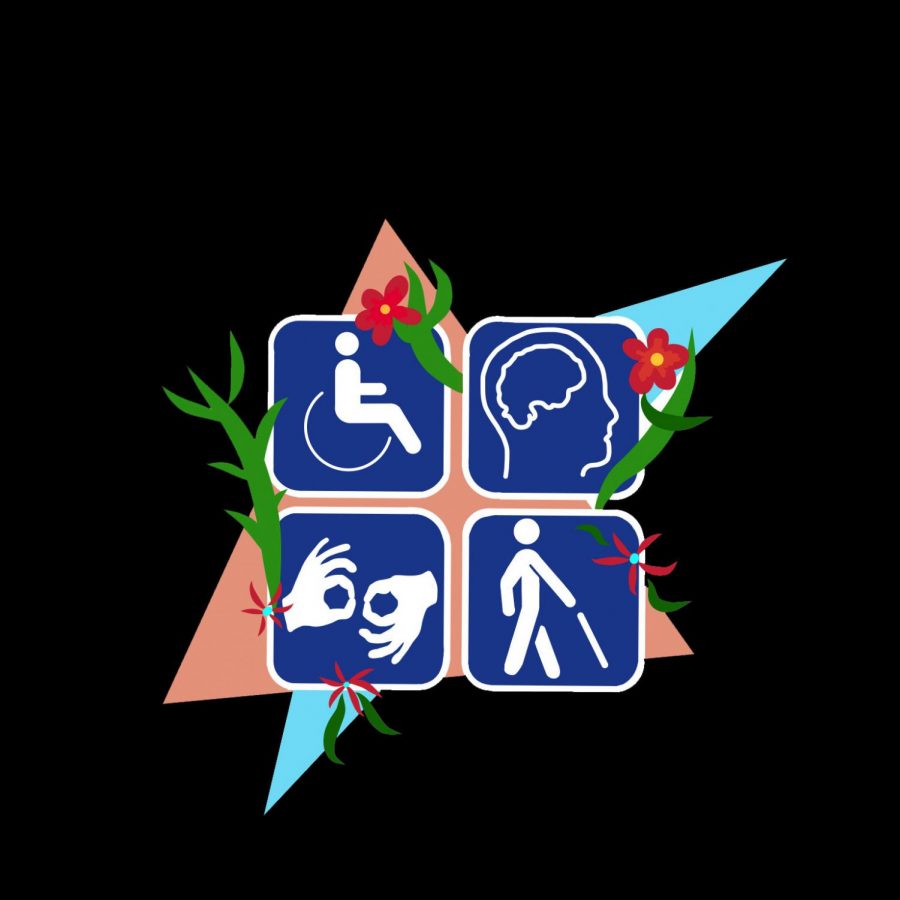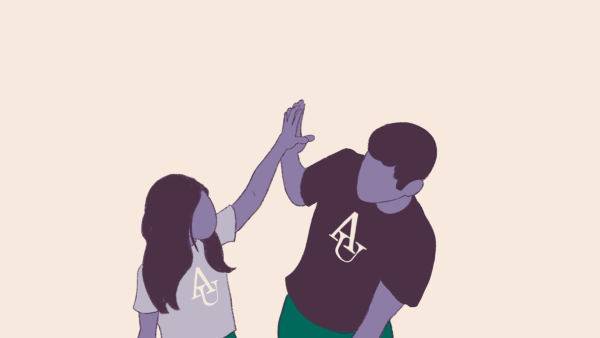Inclusivity Requires Accessibility: Issues with ASAC Accommodations
This story originally appeared in AWOL’s Spring 2020 magazine. See the full magazine here.
Within the greater American University community, an average of 6,000 students apply for accommodations relating to their disability each year.
In 2019, a study by the National Center for Education Statistics found that approximately 19% of undergraduate students in the United States are living with a disability.
AWOL published an article last year covering one of these cases, wherein the AU campus center for disability services denied academic accommodation requests for a student living with a diagnosed learning impairment.
This was not an isolated incident for students with disabilities — visible or invisible, temporary or otherwise.
AU emphasizes its progress towards creating an inclusive community for all students. “Diversity”, “equity”, “accessibility” and “inclusive excellence” are all listed as core values on the University’s website.
The Academic Support and Access Center, as stated in their mission statement posted to their website, is meant to “support the academic development and educational goals of all American University students and is committed to promoting access for individuals with disabilities within the university’s diverse community.”
ASAC provides a range of accommodations for students, such as supplemental instruction and tutoring for students with learning disabilities and assistive learning technology for students with visual or hearing impairments.
Priority deadlines are set for accommodation applications at the beginning of each semester. ASAC’s website states that “requests submitted after the priority deadlines will be reviewed in a timely fashion, but accommodation decision-making and implementation cannot be guaranteed by the beginning of the semester.”
The office’s website makes note of the guideline, saying that while they are priority deadlines, missing the deadline does not make a student ineligible for receiving accommodations, However, the policy continues, saying that “accommodation decision-making and implementation cannot be guaranteed [for all students] by the beginning of the semester.”
“Missing out on the introduction to these courses can pose challenges for students and turn into a difficult game of catch up,” said Christina Harris, an AU graduate student and teaching assistant at the School of International Service.
“Attending the first few weeks of any university class is highly important, as this is when you first meet your professor, discuss course expectations, and have the time to really feel out the course to see if it’s right for you,” Harris said.
Harris said this period of time may also affect whether or not a student will make the decision to drop or add a course. Missing the first two to three weeks of a semester because of pending disability accommodations also effectively shortens students’ drop periods.
ASAC did not respond to requests for comment by the time of publication.
Daniel Sackstein, a junior at American University, injured his knee while living on campus during his freshman year. “It was physically exhausting to hold up my body weight plus a heavy backpack while I was essentially hopping on just one leg,” Sackstein said.
When first registering for accommodations with ASAC, Sackstein said that he felt desperate about handling the distance from the freshman dorms to Kerwin Hall while dependent on crutches.
In a previous public statement issued regarding last year’s case, the University said, “Recognizing that every student has unique needs that may change over their time at AU, ASAC seeks to fully engage with all students requesting accommodations in an individualized, interactive, and continuous process.”
When requesting his accommodations, Sackstein said, “I tried to get them to commit to offer rides to the quad, even for just the first week while I transitioned. But they wouldn’t budge.”
“I mentioned that my friend who had an ACL tear was accommodated by her university, but they told me that this was AU,” Sackstein said.
Aside from these instances, Sackstein said, “ASAC was actually super helpful. They arranged for me to take one of my exams I missed due to doctors visits in their offices.”
But the road to receiving accommodations does not end simply once a student is able to connect and work with an accessibility advisor.
ASAC’s process for receiving accommodations states that “students must give comprehensive and relevant documentation that explains the impact of [their] disability and makes a recommendation for accommodation.”
This policy leaves students that are a part of the AU community with undiagnosed or invisible disabilities in a difficult position.
Another AU student, who wishes to remain anonymous to avoid further retribution, admitted they were hesitant to start the process. They said, “I knew it would be difficult to get a note with an official diagnosis.”
Not only are they not officially diagnosed, but they were also in the process of switching doctors after moving to the District during their freshman year. When they did contact their original physician, the doctor informed them “they couldn’t give a diagnosis note without seeing them in their office.”
Section 504 of the Rehabilitation Act of 1973 requires universities that receive federal funding to accommodate students with disabilities to ensure they get the same quality of life and education as others on campus. ASAC, however, states on their website that “students may enter the university without identifying their disability.”
Whether they are approved for on-campus accommodations or not, the fulfillment of a student’s accommodation request is dependent upon each individual professors’ willingness to oblige.
Sackstein said that his professors at AU were extremely helpful and understanding, and at times, helped him when ASAC wouldn’t.
This experience varies, however, on a case by case basis. Particularly for students who report invisible disabilities.
The Americans with Disabilities Act outlines an “invisible disability” as any physical, mental, or neurological condition that inhibits or challenges a person’s daily activities yet is not visible to outsiders. This includes, but is not limited to, attention disorders, stress disorders, and chronic pain or illness.
The same AU student who wishes to remain anonymous found that their professors were less likely to believe them because the main effect of their illness is pain — something that oftentimes is not as apparent as other physical injuries.
“I find myself going to class more often than is healthy for me, as I know the repercussions of missing class are often severe grade deductions,” the student said.
According to the Invisible Disabilities Association website, “people often judge others by what they see and conclude a person can or cannot do something by the way they look. This attitude can be equally frustrating for those who may appear unable but are perfectly capable, as well as those who seem able, but are not.”
The ASAC campus accessibility map shows there are three buildings on campus that are not accessible by wheelchair or crutches. If a student requires such assistive equipment and is assigned to a class in one of these inaccessible spaces, ASAC policy states that the student needs to go through the University Registrar to move their courses to buildings with accessible classrooms.
According to ASAC’s website, it can take up to several business days before a student is able to attend their classes.
As of 2020, the East Quad Building and the President’s Building are both completely inaccessible for students who use assistive equipment like a wheelchair to travel.
Hurst Hall, the third building on AU’s main campus that is considered inaccessible, has a wheelchair lift leading up to the doors of the building’s main entrance. Once inside, however, a set of stairs is the only point of access for classrooms on other floors.
As part of AU’s strategic five-year plan “Changemakers for a Changing World,” AU’s Planning and Project Management’s 2021 Campus Plan explains the office’s “bold vision for the university, drawing upon AU’s legacy of scholarship, learning, and community.”
AU Director of Public Affairs Stacie Burgess stated that “Hurst and East Quad buildings will be made accessible as part of proposed renovation plans and after approval of the campus plan anticipated for 2021. The focus has been on other facilities and the university has not made any decisions regarding plans to make the POB accessible.”

Sierra Cougot (she/her/hers) is in her second year at American University, studying journalism and communications with an SIS minor. Cougot is passionate...







